






























Airlines, Airports and Airliners News
Google Banner Ad
This week In Airlines, Airports and Airliners
FAA Closely Monitoring Inspections of Boeing 737 MAX Airplanes.
Airlink upgrades aircraft at Richard Bay Airport due to growing passenger and cargo demand.
South African Airways expands partnership with SunExpress.
Ethiopian Airlines and Citi Sign a USD $450m loan agreement for five new aircraft.
IATA Rolls Out New Timatic Product to support contactless travel.
ICAO - Celebrating Latin America's aviation achievements and opportunities.
easyJet orders a further 157 A320neo family aircraft.
Lufthansa Group to buy up to 100 737 MAX Jets in first Boeing single-aisle order in nearly 30 years.
Airlink goes in to bat as official airline for Betway SA20 Cricket Championship.
Bonus video - Douglas DC3 Dakota


FAA CLOSELY MONITORING INSPECTIONS OF BOEING 737 MAX AIRPLANES
The FAA is closely monitoring targeted inspections of Boeing 737 MAX airplanes to look for a possible loose bolt in the rudder control system. Under consultation with the FAA, Boeing has issued a Multi-Operator Message (MOM), urging operators of newer single-aisle airplanes to inspect specific tie rods that control rudder movement for possible loose hardware.

The FAA will consider additional action based on any further discovery of loose or missing hardware. Boeing recommended the inspections after an international operator discovered a bolt with a missing nut while performing routine maintenance on a mechanism in the rudder-control linkage. The company discovered an additional undelivered aircraft with a nut that was not properly tightened.

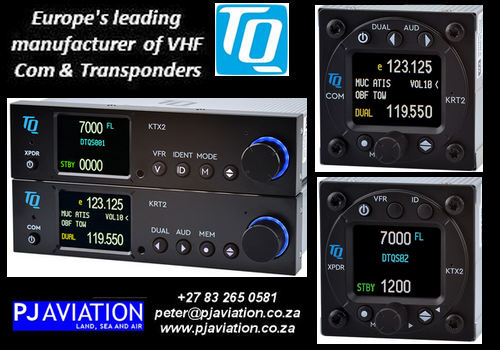
Airports Company South Africa (ACSA) congratulates Airlink on the upgrade of their aircraft at Richards Bay Airport, in KwaZulu-Natal, due to increased demand for both passenger and cargo services. pleased to note that regional airline
Airlink will be upgrading to a larger aircraft, transitioning from the 29-seater British Aerospace Jetstream 41 (J41) to the 75-seater Embraer ERJ 170 (E170). The airline currently operates flights between Richards Bay and more than 45 destinations within South Africa.
ACSA has partnered with the Umhlathuze Municipality through a multi-year contract to manage the Richards Bay Airport after it remained closed for close to two years. The partnership will see the transfer of skills among others, as well as bringing much-needed revitalisation of the local economy through the optimisation of the transport infrastructure, where ACSA will play a pivotal role.
The growing demand for passenger and cargo services at Richards Bay Airport has seen Airlink's fleet operating at full capacity, necessitating the upgrade. Since resuming in September 2022
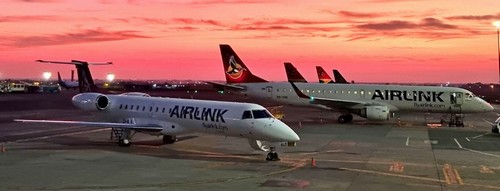
ACSA's recovery is largely driven by the rapid turnaround in domestic travel, which underscores the importance of this market's contribution to our business. In October 2023, 2 800 passengers were processed through the airport, which indicates a 230% increase since the airport re-opened its doors for business.
ACSA notes that the aircraft upgrade is not only a milestone for Airlink but also crucial for the airport and the community of uMhlathuze. With the increased seating capacity, there will be more opportunities for travel and enhanced cargo movement.
But of more significance for Airports Company of South Africa, is the alignment with the principles stated in the White Paper on National Civil Aviation Policy:
"Airport development should not be considered in isolation, but be integrated into all national, provincial, and municipal economic and spatial development initiatives. At the same time, airport development should also meet the social needs and objectives of local communities. There should therefore be synergy between airport development and the development strategies of all spheres of government," says ACSA Regional General Manager, Nkosinathi Myataza.
Richards Bay Local Airport Manager, Langa Ndebele says "Richards Bay Airport is an important airport in the region, facilitating the movement of goods and passengers from an economic hub of some considerable force and the role that the airport is playing in the continued economic development of this region is significant.
The commencement of flights to and from Richards Bay is adding positive value to growing businesses in the city and also contributing to the success of the region's leisure and tourism sector."
"This is a positive development that speaks to the robust and steady recovery of the domestic aviation sector. We wish Airlink all the best and may they see further growth and expansion in the future," concludes Mr Ndebele.
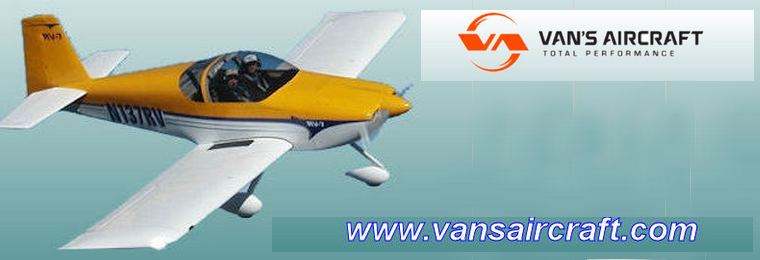
SOUTH AFRICAN AIRWAYS EXPANDS PARTNERSHIP WITH SUNEXPRESS
South African Airways (SAA) has signed a memorandum of understanding (MoU) with SunExpress (a joint venture of Lufthansa and Turkish Airlines), to support the national carrier's operations with four aircrafts in the 2024/2025 financial year.
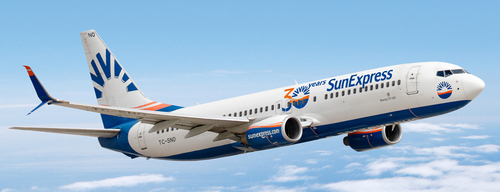
"The memorandum of understanding clearly underlines our commitment to further deepen our successful partnership with SAA. We are proud of the trust that SAA is placing in us with the renewed intention to collaborate. We strive to build on this to develop a strong, long-term partnership and leverage more opportunities together in the future", said Max Kownatzki, CEO of SunExpress. "Over the next decade, SunExpress will more than double its fleet, reaching a 150-aircraft fleet by 2033. This kind of partnerships enable us to efficiently utilize our fleet, mitigating the impact of our seasonality," added Kownatzki.
Prof. John Lamola, CEO of SAA, welcomed the continued cooperation: "SunExpress has proven to be an extremely reliable partner for us in the first few months. We are therefore delighted that this valuable partnership will not only be continued but the scope of the partnership expanded to include additional aircraft for our 2024 holiday peak season. The additional aircraft will support our operations to meet the growing customer demand during peak seasons and mitigates our management of the global aircraft availability crisis."

Ethiopian Airlines, Africa's largest carrier, today announce a landmark USD $450 million loan agreement that will finance five new Boeing aircraft: three Boeing 737-8 and two Boeing 777F (Cargo).
The loan will be secured against the value of the five planes and has been arranged exclusively by Citi's Corporate Banking and Export Agency and Finance teams. It is guaranteed by the Export-Import Bank of the United States (EXIM).
Ethiopian Airlines is a longstanding client of Citi's Treasury and Trade Solutions (TTS) business, and their support and partnership have been instrumental to reaching the deal. Different parts of the bank, all working together, reflect Citi's unique ability to offer different banking services to clients with cross border needs.
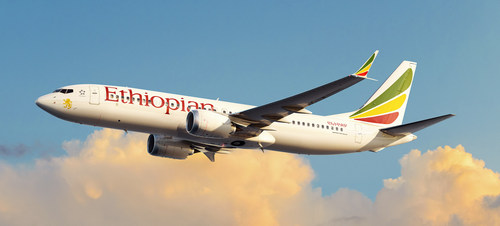
The five new aircraft will bolster Ethiopian Airline's fleet to 150 in total and delivery of all the aircraft will be completed in the U.S. state of Washington in December. The new arrivals will help Ethiopian serve all its destinations by accelerating its expansion throughout the world and will further bolster Ethiopian Cargo & Logistics Services' position as Africa's largest cargo network operator. Ethiopian Airlines has ambitions to grow its fleet to over 270 aircraft by 2035.
Lauding the long-standing partnership of the two parties, Ethiopian Airlines Group CEO Mr. Mesfin Tasew said, "We are pleased to announce that we have reached an agreement with Citi to secure a USD $450m loan. This financing will allow us to expand our fleet size by adding five new aircraft, three B737-8 MAXs and two 777 Freighter. We are grateful for the mutually beneficial partnership we have established with Citi and look forward to further strengthening it. Fleet expansion being one of our strategic growth pillars, we will continue expanding and modernizing our fleet size so as to grow our business and reach new markets."
Akin Dawodu, Citi Sub Saharan Africa Head, commented: "Citi has been serving Ethiopian Airlines for many decades, and we are pleased to support its growth with financing for five new aircraft. A lot of work has gone into getting this deal off the ground, and it is thanks to Citi's strong relationships and connectivity both within the country and across our global network that we have been able to make it happen. Both our Banking and Treasury and Trade Solutions partners were instrumental in the delivery of this deal, and I would like to thank all teams for their collaboration."
Citi has been working with Ethiopian Airlines for 45 years, supporting the airline's treasury operations and working capital management in 27 countries across five continents. Citi's unrivalled global network will continue to support Ethiopian Airlines' expansion across Africa, Asia, the Americas, Europe and beyond.
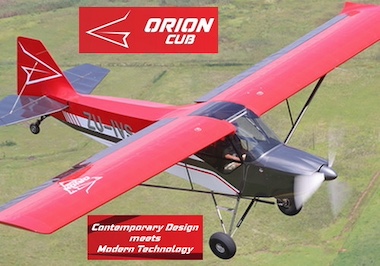
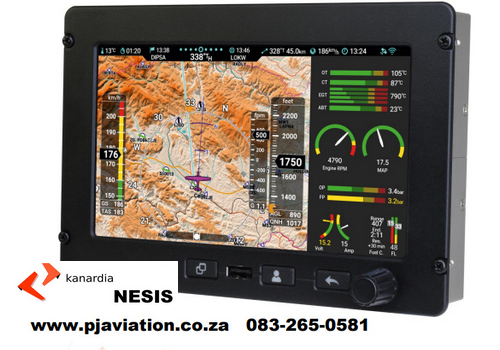
IATA ROLLS OUT NEW TIMATIC PRODUCT TO SUPPORT CONTACTLESS TRAVEL
The International Air Transport Association (IATA) has rolled out the next generation travel documentation and verification system which supports contactless travel and enhances the passenger experience. To achieve this, Timatic has undergone a complete redesign, setting a new benchmark in travel compliance solutions.
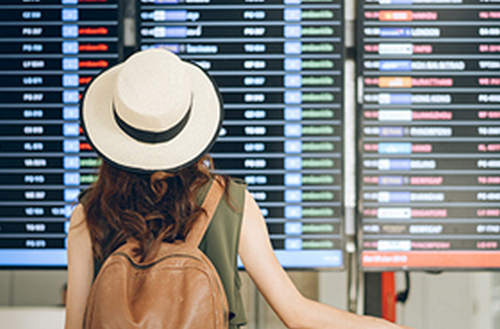
IATA's most recent Global Passenger Survey (GPS) revealed that complex visa requirements deter travellers who want a convenient, digital online visa process. Moreover, many are willing to share their travel document information for faster airport immigration procedures.
36% of travellers said they have been discouraged from traveling to a particular destination because of the immigration requirements. Process complexity was highlighted as the main deterrent by 49% of travellers, 19% cited costs and 8% privacy concerns.
Where visas are required, 66% of travellers want to obtain a visa online prior to travel, 20% prefer to go to the consulate or embassy and 14% at the airport.
87% of travellers indicated they would share their immigration information to speed up the airport arrival process, representing an increase from the 83% reported in 2022.
"Taking advantage of traveller willingness to use online processes and share information in advance, Timatic AutoCheck enables airlines, ground handlers, departure control systems and travel agents a customer friendly online solution, through which travellers can check that they comply with all immigration requirements before setting off to the airport," said Frederic Leger, IATA's Senior Vice President Commercial Products and Services.
Timatic AutoCheck can easily be integrated into airline reservation and departure control systems (DCS) as well as distribution systems used by travel agencies and online booking platforms and features the following product enhancements:
Simplified Regulatory Content: Timatic AutoCheck includes simplified and more user-friendly worded travel regulations, making them easier to understand. Travelers no longer need to know terminologies or read through complex regulations as the information is now provided in a concise manner.
Interactive Data Driven Approach: Leveraging the power of data, users will now be guided through each step of the compliance process, ensuring they possess all required documents and meet the entry requirements. Users can input their travel details and receive personalized responses.
Practical Recommendations: Timatic AutoCheck offers more than just information; it provides responses. Whether checking visa requirements, health regulations or entry restrictions, users now receive instructions on how to proceed and comply with regulations so they can promptly address any issues they may encounter.
Enhanced Automation: The latest automation features make self-service check-in even easier. Airlines have the option to incorporate the new Timatic AutoCheck into their systems enabling passengers to independently verify their travel documents and compliance status through the various check-in options on offer.
"Timatic AutoCheck represents a further milestone in the pursuit of efficiency and convenience within the travel industry. By effortlessly navigating regulations, travelers can embark on their journeys with confidence and peace of mind. In addition, this innovation also enables airlines, ground handlers and travel agents to enhance customer satisfaction, integrate travel documentation verification into the contactless travel experience and streamline their operations", said Leger.
Major DCS providers like Amadeus, Hitit and Sabre, along with various airlines and Star Alliance are already working with IATA to upgrade to the new Timatic AutoCheck, taking the next step towards a seamless travel experience and contactless travel.
Timatic has been providing users with reliable and real time information on the required documentation for international travel since its inception in the 1960s. For this, IATA relies on a variety of sources, including governments, airlines, or airports. The accuracy of this data is key to ensuring that the correct information is provided to airlines and passengers alike. Annually, more than a billion passenger document checks are performed through Timatic.
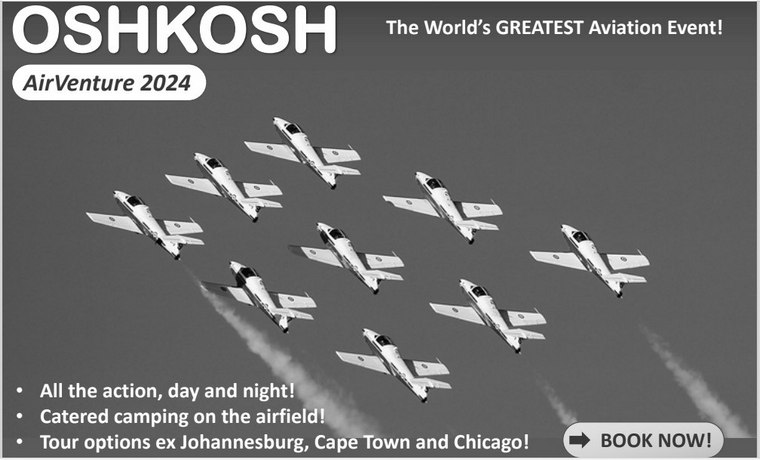
The President of the ICAO Council, Mr. Salvatore Sciacchitano, and the ICAO Secretary General, Mr. Juan Carlos Salazar, recently conducted missions to Lima on the occasion of the Latin American Civil Aviation Commission (LACAC)'s VII Extraordinary Assembly, which coincided with LACAC's 50th anniversary and the 75th anniversary of Peru's hosting of ICAO's South American Regional Office.
In their respective opening and closing remarks to the Assembly, the President and the Secretary General underscored LACAC's pivotal role in supporting cooperation among Latin American States and with ICAO. The continuous enhancement and development of air connectivity among Latin American States, positions them well to address the technological and ecological opportunities and challenges facing aviation today.
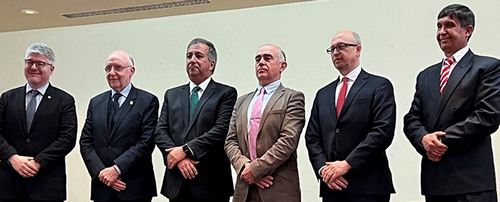
ICAO welcomed the adoption of the Declaration of Lima at the Assembly as a crucially important guiding document for the Region over the next decade, and commended LACAC President Leonardo Blengini and LACAC Secretary Jaime Binder for the meeting's success.
During the event, Panama announced that it would join the ICAO Assistance, Capacity Building, and Training Program for Sustainable Aviation Fuels (ACT-SAF) and was hailed as providing significant leadership for the region in this area.
In addition to their LACAC-related activities, Mr. Sciacchitano's and Mr. Salazar's missions also comprised bilateral meetings with Peru's Minister of Foreign Affairs, Mr. Javier González-Olaechea Franco, and its Minister of Transport and Communications, Mr. Raúl Pérez-Reyes.
These bilateral meetings focussed on enhancing cooperation between ICAO and Peru, notably in the areas of air navigation, facilitation, strategic planning, and environmental sustainability, particularly within the context of the recent commitments made by ICAO Member States to reduce CO2 emissions by five percent through the use of sustainable aviation fuels (SAF) and lower-carbon aviation fuels (LCAF).
The bilateral meetings further provided the President and the Secretary General with an opportunity to extend ICAO's gratitude to Peru for its generous and continuous hosting of the organization since 1948.
Throughout their activities in Lima, which took place from 13 to 15 December 2023, the President and the Secretary General were accompanied by ICAO's Regional Director for South America,
Mr. Fabio Rabbani; and ICAO's Regional Director for North America, Central America, and the Caribbean, Mr. Christopher Barks.

easyJet has confirmed a firm order for 157 additional A320neo Family aircraft following shareholder approval. The firm order comprises 56 A320neo and 101 A321neo aircraft and also includes the upsizing of an existing order for 35 A320neo into the larger A321neo. The agreement is part of easyJet's fleet renewal and upgauging plan and is also bringing substantial sustainability improvements to its business.
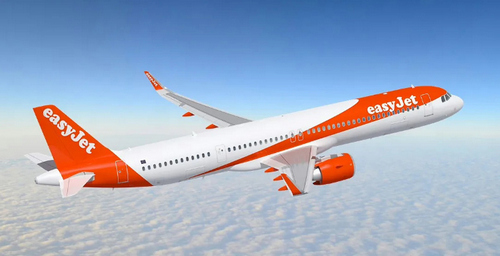
The A320neo Family is the world's most popular single aisle having won over 18,000 orders from nearly 140 customers in all markets. The A321neo is the largest member of Airbus' A320neo Family, offering unparalleled range and performance. By incorporating new generation engines and Sharklets, the A321neo brings a 50% noise reduction and more than 20% fuel savings and CO2 reduction compared to previous generation single-aisle aircraft, while maximizing passenger comfort in the widest single-aisle cabin in the sky. As with all Airbus aircraft, the entire A320 Family is already able to operate with up to 50% Sustainable Aviation Fuel (SAF). Airbus aims for all its aircraft to be capable of operating with up to 100% SAF by 2030.
To date over 5,600 A321neos have been ordered by more than 100 customers across the globe.
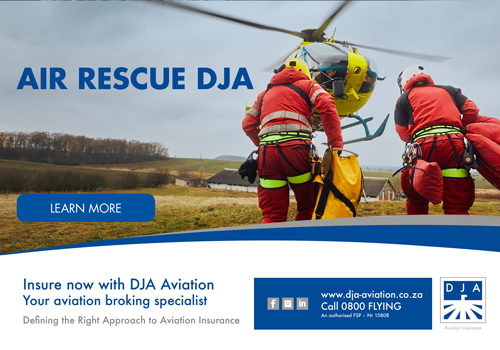

Boeing [NYSE: BA] and the Lufthansa Group today announced a landmark 737 MAX order for up to 100 jets that will see Europe's largest airline group restore the Boeing 737 family into its fleet. The commitment includes a firm order for 40 737-8 airplanes with 60 options.
Boeing's ongoing commitment to support the sustainability goals of its airline partners is reflected in the 737 MAX's efficient design. The 737 MAX reduces CO2 emissions by 20% and has a 50% smaller noise footprint compared to older generation airplanes.
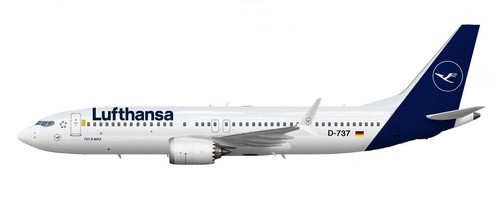
Lufthansa launched the Boeing 737 in 1967, taking delivery of the first of 146 737s until its final delivery of a 737-300 in 1995. The airline retired its last 737 in 2016 as it started its group wide fleet modernization program.
The Lufthansa Group has placed a series of wide-body orders in recent years to accelerate replacement of older airplanes. Its current backlog includes firm orders for 34 787 Dreamliners, seven 777-8 Freighters and 20 777-9 airplanes.


Airlink, South Africa's premier independent airline, will be the official airline partner of the Betway SA20 Cricket Championship, to be contested across the country over four weeks from this Wednesday, 10th January, culminating with the final on Saturday 10th February.
As the official partner carrier, Airlink will fly the player squads, coaches, management and support staff of the six competing franchise teams between their various matches.
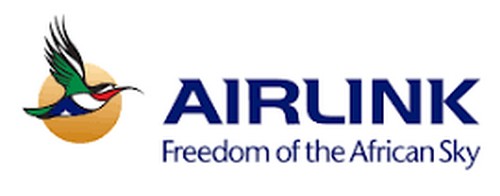
The championship will showcase many of the world's best beguiling bowlers, fleet-of-foot fielders and swashbuckling batsmen who will take on each other in Durban, Cape Town, Paarl, Johannesburg, Centurion and Gqeberha (Port Elizabeth) in the series of intense limited 20-over matches.
"The SA20 is a fantastic opportunity for the six teams to test their mettle against their rivals, with matches being played at some of the world's most iconic pitches. It's also a fine time for Airlink to bowl over cricketers and fans with our great customer service, connections, and convenient flights to some of the other hit-for-six attractions and destinations we fly to in Southern and Eastern Africa as well as Madagascar and St Helena Island," said Airlink CEO and Managing Director, Rodger Foster.
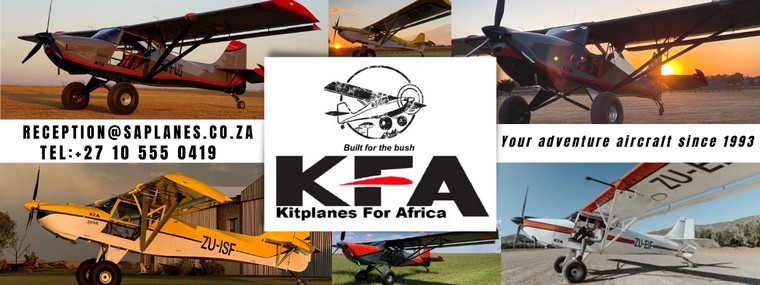

Russia, near Surgut Airport: An Utair Boeing 737-500 with 96 on board suffered a failure of engine no.2 some two hours after departure from Moscow's Vnukovo Airport. The captain decided to divert to Surgut Airport, where half an hour later the plane landed safely.
Japan, Tokyo/Narita International Airport: An Ethiopian Airlines Boeing 787-8, from Tokyo/Narita, Japan to Seoul/Incheon, South Korea, mistakenly turned left instead of right when the airplane was entering taxiway K from S3 for departure from Narita. ET673 came face to face with a Jetstar B787-8 with registration from Tokyo/Narita, Japan to Brisbane, Australia, which was taxiing on K-TWY as ROUTE 2 for departure from runway 34L. Both B787s stopped taxiing with a few hundred meters of separation. ET673 was towed back to clear the intersection with S4-TWY, and JQ10 resumed taxi via S4, C, S and A-TWYs to reach runway 34L 27 minutes later. ET673 could taxi via S3, C, S and A-TWYs for runway 34L departure with another ten minutes of delay.
USA, near Charlotte Douglas International Airport: An American Airlines Airbus A319-112 with 134 on board flight had to conduct an emergency landing at Charlotte Douglas Airport. The flight landed safely around 11:20 a.m. The crew stopped the climb at about 15500 feet and decided to return to Charlotte reporting they had dragging brakes on departure and were concerned about their brakes on landing. Medic said no one from the flight was transported to the hospital. After returning, the plane spent a day in maintenance in Charlotte.
Netherlands, Amsterdam-Schiphol International Airport: An United Airlines flight UA21, a Boeing 777-224ER, suffered a bird strike (seagull) during take-off from Amsterdam-Schiphol International Airport (AMS). The nose cone suffered a large indentation, causing a loss of radar. The flight dumped fuel over the North Sea and returned to land back at AMS, 80 minutes after take-off.
Canada, South of Goose Bay, NFL: Delta Air Lines flight DL135, an Airbus A330-323, diverted to YYR while en route over eastern Canada. While in cruise flight, an indication of an anomaly in the left engine anti-icing system appeared. The crew completed the Quick Reference Handbook (QRH) checklist and the decision was made to divert to Goose Bay Airport, NL The crew then declared an emergency with ATC and announced their intention to divert. The aircraft was approximately 35 nautical miles northeast of Michel Pouliot Airport in Gaspé, QC It then landed safely on runway 26 at CYYR. There were no injuries or damage.
Canada, 45 nm NW of London, ON: A Delta Air Lines a Boeing 737-832 with 107 on board was en route to Toronto International Airport (CYYZ) when the flight crew observed an intermittent stabilizer trim indication which disappeared while consulting the quick reference handbook (QRH). Approximately 20 minutes later, during the initial descent, the indication returned. The flight crew followed the QRH procedure and tested both the electric and manual trim operation which were found inoperative. The flight crew subsequently declared an emergency with air traffic control (ATC) and planned for a flap 15 landing as per the QRH. At approximately 12 000 feet, the flight crew requested the assistance in the flight deck to a Boeing 737 deadheading captain who was sitting in the cabin. The flight crew noted that the aircraft controllability remained normal during descent before the aircraft landed without further incident into CYYZ.

Douglas DC3 Dakota

Google Banner Ad
 |
 |
 Copyright © 2024 Pilot's Post PTY Ltd
The information, views and opinions by the authors contributing to Pilot’s Post are not necessarily those of the editor or other writers at Pilot’s Post.
Copyright © 2024 Pilot's Post PTY Ltd
The information, views and opinions by the authors contributing to Pilot’s Post are not necessarily those of the editor or other writers at Pilot’s Post.